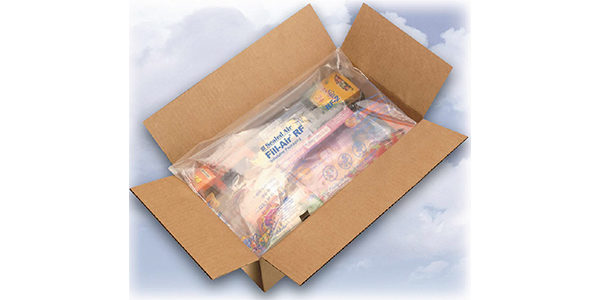UPS, Sealed Air team up to streamline parcel packaging

UPS Inc. and packaging giant Sealed Air Corp. said they have teamed up to help shippers streamline their packaging processes and reduce shipping costs, a task that has taken on more importance in light of recent moves by UPS and rival FedEx Corp. to make it more costly to ship parcels that contain excess packaging.
The announcement, made Monday, formalizes a partnership that began in 2015. UPS customers will gain access to package-engineering intelligence through Sealed Air's "Packaging Application Centers," which provide design, testing, and packaging performance analysis at 27 global locations. Sealed Air will offer packaging systems and materials to small to mid-size UPS shippers through the Atlanta-based transport and logistics company's "Customer Technology Program" (CTP), which connects those UPS customers to an array of its vendors. Sealed Air will also open a customer showroom in early 2017 on the Louisville campus of UPS Supply Chain Solutions, a UPS unit.
The initiative will initially focus on leveraging Sealed Air products and services in the "package filler" segment, which addresses issues involving parcel integrity and damage prevention, said Glenn Zaccara, a spokesman for Atlanta-based UPS. Sealed Air also offers services that focus on package size and design, both of which affect a parcel's dimensional weight and, by extension, the formula used by UPS and other carriers to price delivery services based on a parcel's dimensions rather than its actual weight.
UPS, its chief rival, Memphis-based FedEx Corp., and other parcel-delivery firms have pushed shippers for years to streamline their processes to reduce surplus packaging embedded around the goods. UPS and FedEx claim that bulky, high-cube parcels occupy a disproportionate amount of space aboard vans and truck trailers. For this reason, FedEx and UPS have expanded the universe of parcels subject to pricing based on their dimensions, a more costly formula than pricing parcels based on their actual weight.
Despite those efforts, the carriers are still struggling with an increase in package cube, a problem that has been exacerbated by the explosive growth of e-commerce and the resulting increase in parcel traffic. According to consultancy eMarketer Inc., worldwide e-commerce sales will reach $1.92 trillion in 2016 and exceed $4 trillion by the end of 2020. A forecast by global technology company Pitney Bowes Corp. said parcel shipping volumes from 12 major countries, including the U.S., will grow 5 to 7 percent annually from 2016 to 2018, paced by growth in cross-border shipping.
In addition, as online ordering expands to include a broader range of products, carriers are straining to handle items like kayaks and ping pong tables, which their infrastructures were not designed for. FedEx Ground, FedEx's ground-delivery unit, which ships much of the company's domestic e-commerce volume, is close to running out of capacity due to sheer volume and an increase in orders of outsized commodities, according to a person familiar with the matter.
Ken Chrisman, president of Sealed Air's product care division, said in an e-mail that the e-commerce surge has led many retailers and carriers to opt for a "one size fits all" approach to packaging practices, which leads to what Chrisman called "too-big boxes stuffed with fillers. "The repetitive 'stuff-fill-repeat' model is fast, simple, and requires minimal training, but is an inefficient use of resources," he said.
An objective of the UPS partnership is to "dispel the notion" that cost and speed have to be sacrificed to gain package efficiency, Chrisman said in an e-mail. "It's entirely possible to minimize packaging material while still providing appropriate protection against damage and without slowing down packaging speed," he said. Smarter packaging practices can also be more affordable without compromising package integrity or packaging velocity, he added.
Sealed Air is perhaps best known for its 1960 invention of the ubiquitous "Bubble Wrap" packaging.
Related Articles
Copyright ©2024. All Rights ReservedDesign, CMS, Hosting & Web Development :: ePublishing